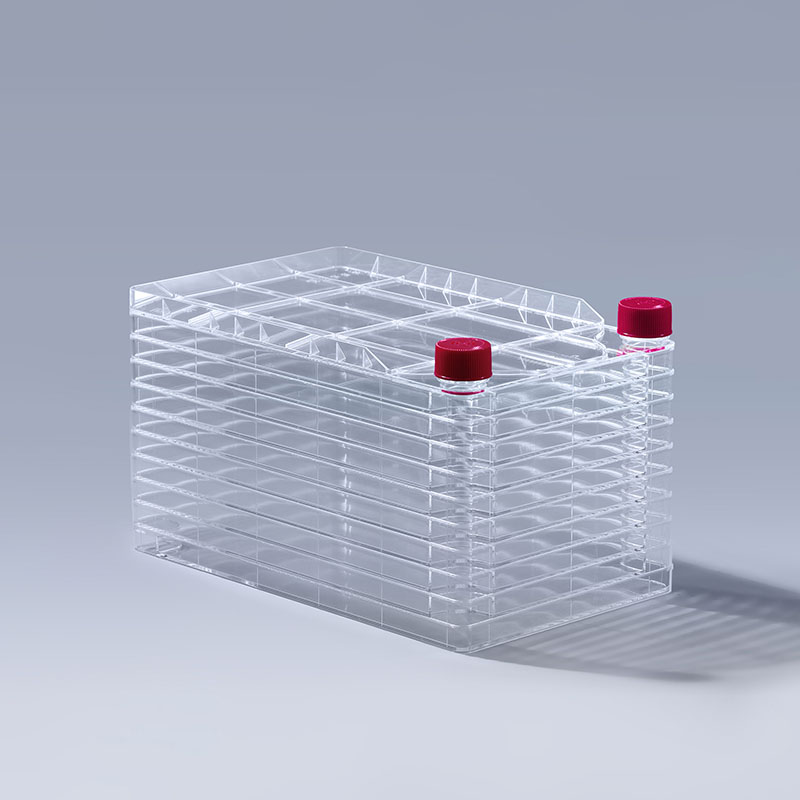During the cell culture process in cell factories, regular inspection and observation of the cells are crucial. This not only helps in understanding the growth status of the cells but also allows for the timely identification and resolution of potential issues such as contamination.
1. Observation of Cell Morphology
The morphology of cells is a key indicator of their growth status. Under a microscope, healthy cells usually exhibit high transparency and refractivity, with indistinct outlines. When cells are not growing well, their outlines become more pronounced, and the cytoplasm may show vacuoles, lipid droplets, and other granular substances. Additionally, the spaces between cells may increase, and the cells may take on irregular shapes, losing their original characteristics.
2. Monitoring Cell Growth Status
After seeding cell suspensions from primary or passaged cultures, cells begin to proliferate following varying latency periods. Generally, passaged cell lines, embryonic tissues, or juvenile tissues show observable growth by the second day, forming confluent layers within a week. Once the seeded cells cover the bottom of the cell factory, subculturing should be promptly conducted. Otherwise, due to nutrient depletion and metabolite accumulation, the cells may enter a stationary or degenerative phase.

3. Monitoring the pH of the Culture Medium
The pH of the culture medium is a crucial factor affecting cell growth. Under normal conditions, the culture medium should appear pink. If cells are maintained at a pH of 6.5 to 6.6, cell death may occur. When the culture medium turns yellow, it indicates the accumulation of metabolic waste products, necessitating a change to fresh culture medium.
4. Prevention of Microbial Contamination
Microbial contamination is a common issue in cell culture within cell factories. Sources of contamination may include the air, culture medium, the cells themselves, and laboratory personnel. Infections by bacteria, fungi, and mycoplasma can lead to changes in the pH of the culture medium, turbidity, or other abnormal phenomena. If contamination is detected, appropriate measures should be taken immediately to eliminate the source of contamination, and the affected cells should be disinfected and cleaned.
In conclusion, observation and management are vital in the process of cell culture within cell factories. By closely monitoring cell morphology, growth status, culture medium pH, and microbial contamination, the healthy growth of cells and the smooth progress of the cultivation process can be ensured.
The FAI climbed 5.9 percent year-on-year in the first 11 months of 2018, quickening from the 5.7-percent growth in Jan-Oct, the National Bureau of Statistics (NBS) said Friday in an online statement.
The key indicator of investment, dubbed a major growth driver, hit the bottom in August and has since started to rebound steadily.
In the face of emerging economic challenges home and abroad, China has stepped up efforts to stabilize investment, in particular rolling out measures to motivate private investors and channel funds into infrastructure.
Friday's data showed private investment, accounting for more than 60 percent of the total FAI, expanded by a brisk 8.7 percent.
NBS spokesperson Mao Shengyong said funds into weak economic links registered rapid increases as investment in environmental protection and agriculture jumped 42 percent and 12.5 percent respectively, much faster than the average.
In breakdown, investment in high-tech and equipment manufacturing remained vigorous with 16.1-percent and 11.6-percent increases respectively in the first 11 months. Infrastructure investment gained 3.7 percent, staying flat. Investment in property development rose 9.7 percent, also unchanged.
 English
English


















































